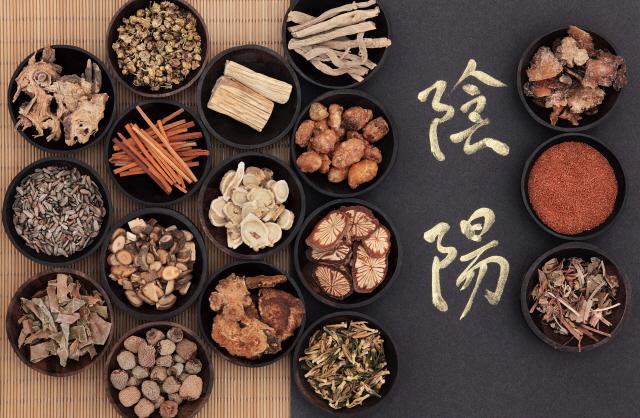
One of The Best Benefits of Sasang Medicine is Practical To Apply
Symptoms Shown Are the Clue To Find Best Herbal Medicine
By Namwook Cho L.Ac.
Constitutional medicine is a well-organized and systemic medicinal structure. Each constitution has unique ways of developing the disease. Due to the theory, a practitioner easily finds the most appropriate herbal medicine and even makes the practitioner predicts what could be the next symptom.
According to Jema Lee, who established the Constitutional Theory, the population ratio of the Large yin type is 50% of all population, meaning 50% of your patients have complained of the following symptoms depending on their stage patterns. The most important symptom that should not be overseen is the presence of heat because the Taeeum type’s interior and exterior symptoms are determined by the presence of heat in their body. For example, Jowiseungcheong-tang and Cheongpyesagan-tang help insomnia and palpitation. But Jowiseungcheong-tang is only used for exterior symptoms.
Once a practitioner decides a patient’s constitution as Large yin type, the most important factors in finding the best herbal formula for the symptom are based on the patient’s complaints. According to Jema Lee, who established the Constitutional Theory, the population ratio of the Large yin type is 50% of all population, meaning 50% of your patients have complained of the following symptoms depending on their stage patterns.
Large yin (Taeeum) type Esophagus cold disease.
Mahwangbalpyo-tang should be considered for the treatment of Supraspinal exterior disease initial stage pattern, which could be defined as a pattern accompanied by symptoms such as chilling, fever, headache, body aches, and backache, painful all joints and no sweating, and asthma.
Mahwangjeongcheon-tang should be considered for treating the Wheezing-panting pattern, which adds asthma to symptoms of the Supraspinal exterior disease initial stage pattern.
Cold-reversal advanced stage pattern: a pattern that symptom with chilling but no fever and no sweating persists due to worsening of the Cold-reversal pattern, then consider Wungdam-san and Handayeolso-tang. If there is an Esophagus cold pattern, present symptomatology with Exterior disease unfavorable pattern ordinary symptomatology, Taeeumjowi-tang may be considered. Herbal medicine should be considered for improvement of Large yin (Taeeum) type Esophagus cold-lung dryness disease by using Taeeumjowi-tang to treat Dry-cold pattern, a pattern accompanied by soft stool or frequent diarrhea and abdominal fullness, bloating and stuffy in the epigastric region after eating, decreased urine output, and edema in Esophagus cold-lung dryness disease.
Jowiseungcheong-tang should be considered for the treatment of Dry-cold advanced stage pattern. Dry-cold advanced stage pattern is accompanied by unexpected palpitation and sleep disorders.
Bopyewon-tang and Nokyongdaebo-tang should be considered for the treatment of Dry-cold intense stage pattern (Yin-blood exhaustion cold pattern). It is a pattern accompanied by weakened eyesight and hearing, weakened lower body, and backache for no particular reason, dryness of skin, hair, and nails, and cases additionally accompanied by nocturnal emission or stirring wind symptoms such as chronic convulsion or stroke in Esophagus, cold-lung dryness disease.
Herbal medicine should be considered for improvement of Large yin (Taeeum) type Liver heat disease. For the stage, Galgeunhaegi-tang should be considered for the treatment of Liver heat disease initial stage pattern. Liver heat disease’s initial stage pattern is defined as a pattern characterized by symptoms such as body heat, including fever, red face and hands, and feet, easy sweating, painful eyes, dryness of nasal cavity, and not being able to lie down comfortably because of stuffiness due to Liver heat.
Galgeunseunggi-tang should be considered for the treatment of Liver heat disease advanced stage Pattern is accompanied by fecal hardening and getting clogged or febrile diarrhea and is mainly characterized by heat syndromes such as tidal fever, sweating a lot, constipation, urination difficulty, abdominal distension, thirst, ravings, delirium, etc., due to progression of Liver heat.
Jogakdaehwang-tang should be considered for the treatment of Liver heat disease intense stage pattern. Liver heat disease intense stage pattern is characterized by a pattern whose main symptoms are sores of pyogenic infection of the head and neck, redness, swelling, and pain in the head and face, neck area, etc., due to worsened Liver heat.
Herbal medicine should be considered for improvement of Large yin (Taeeum) type Liver heat lung dryness disease. Yeoldahanso-tang and Cheongpyesagan-tang should be considered for the treatment of Dry-heat pattern. Symptoms shown on the sage are characterized by energy-fluid wasting pathology in the flesh in which thirst persists due to frequent urination despite drinking a lot of water, dryness of skin, hair, and nails occurs, and in the long term, ulceration and abscess frequently occur in the flesh, and the flesh volume decreases and it leads to a state of extreme strengthlessness.
Cheongsimyeonja-tang should be considered for the treatment of Dry-heat advanced stage pattern. The stage is characterized by unexpected palpitation, sleep disorders, and worsening of psychological anxiety with a Dry-heat pattern due to the worsening of deepened Seong-Jeong inclined signs.
Gongjinheukwon-dan should be considered for treating the Dry-heat intense stage pattern (Yin-blood exhaustion heat pattern).
Dry-heat intense stage pattern(Yin-blood exhaustion heat pattern): a pattern accompanied by weakened eyesight and hearing, weakened lower body, and backache for no particular reason, dryness of skin, hair, and nails, and decreasing volume of the flesh become severe in Liver heating dryness disease.





































